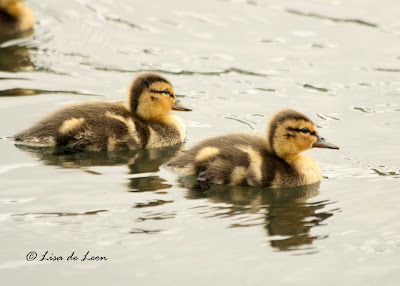I believe all of the duckling pictures presented here to of be of American Black Ducks. They grow so rapidly so I decided to show several pictures to reflect their stages of growth.
Quite by accident I came upon this raffle of six (five shown here) poults (baby Turkeys.) There was one white one among them but it didn't seem to get in this picture.
Hovering over the lot of babies was this very large papa. His presence was powerful enough to keep me in my car.
I believe this to be a baby Crow, some call it a chick. Yet, when I look at it, it seems much larger than a chick.
This baby Ruffed Grouse (some call it a cheeper) was one of the more special baby finds. It was found on Bear Cove Point Road with its mother. They got separated for a little while and there was sheer panic in the call of the mother; it almost sounded like a whining, crying dog.
I believe this to be a baby Raven, although it does resemble the baby crow a lot. Not even being sure of identifying adult birds yet, I am really hard-pressed to be sure of the young version of each bird. All in good time!
This was another very special sight to see this baby Common Loon following its parents across a large pond. While most refer to a baby Loon as a chick, loonie seems more appropriate.
Sometimes young birds can look like a whole new species. This young Dark-eyed Junco could easily be mistaken as another type of bird. It has a distinct eye ring, its beak has not changed colors yet and there is a lot of brown streaking on its breast. However, one sure way to tell is to wait for the bird to fly and watch it flash it white tail feathers.
Seeing this young Common Tern was also quite special. I had never seen one and its white head was a real stand-out. We were unable to get too close to this bird as the adults were very effective in protecting the zone.

This young American Robin is clearly a robin but its markings are also a good clue that it has not been out of the nest very long. It is really nice to watch the young birds because they have not yet gained full control of their flying power and sometimes it takes multiple attempts to get where they want to go, kind of like a toddler.
These young seagulls were also a first for me. I have seen Black-legged Kittiwake chicks on the cliffs during bird tours but there seemed to be a mix of Herring Gull and Black-backed Gull chicks growing up on the breakwater in Conception Bay South.
The smallest little birds that I have seen are these little Spotted Sandpipers. Quite by accident we came upon a family of three baby Spotted Sandpipers at Cape Broyle. It was amazing how well they navigated the rocks around them.
It was not possible to get close to these little birds and that is fine because it really is a "best practice" to leave the entire family alone when there are young among them.
By contrast in size this little foal couldn't have been more than a few days old. Its legs were still a little wobbly but it looked healthy and happy as it would stay close to its mom and then venture away and then return to the safety of her side.
While in Spring we see the flowers bloom and the trees fill out with their leaves, it is at this time that most birds are just mating. Given the short period of incubation required by most birds, this is the time of the year that many fledglings appear, often guarded over by their protective parents. It offers up a whole new pattern of behaviour for a new bird watcher to study.
All of these pictures were taken over the last three weeks and were all happen chance as I did not go searching for baby birds. Nevertheless, Nature has once again offered multiple lessons in my pursuit of knowledge about the bird world.
















